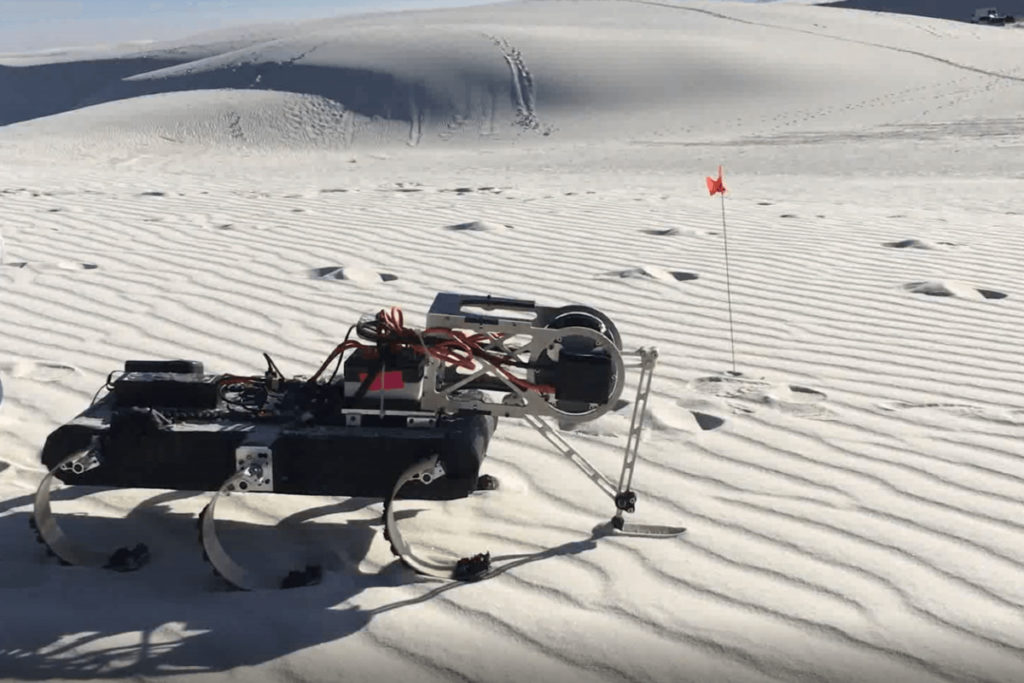
For decades, robots have helped researchers navigate rough terrain and explore territory nearly impossible to access otherwise. The use of robots has allowed scientists to study key info about the moon and other planetary bodies, such as material makeup and water content. However, despite being uniquely equipped for the job, moon rovers and explorer robots still very often become stuck, forcing abandonment of important and costly missions.
Feifei Qian, GRASP Lab alumna and current Assistant Professor at the USC Viterbi School of Engineering, is leading a three-year $3-million research project funded by NASA to create legged robots that could more easily glide through icy surfaces, crusted sand and other difficult-to-navigate environments, significantly enhancing scientists’ abilities to gather information from distant worlds.
Along with her colleagues at USC, Qian is collaborating with Daniel Koditschek, Alfred Fitler Moore Professor in the Department of Electrical and Systems Engineering, who served as Qian’s advisor during her time at the GRASP Lab, as well as Douglas Jerolmack, Professor in the Department of Earth and Environmental Science in Penn Arts & Science and Mechanical Engineering and Applied Mechanics in Penn Engineering.
Their goal? To understand how to integrate robotics technology with both planetary science and cognitive science.
“How do we exploit a robot most efficiently, so it takes on some of the burdens of decision making?,” asks Jerolmack.
Read “Legged Robots to Aid with Planetary Research” at USC Viterbi School of Engineering.
